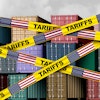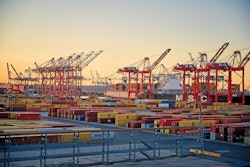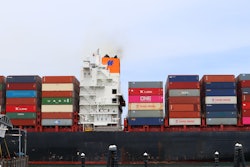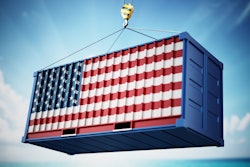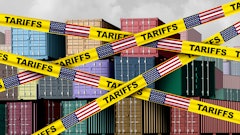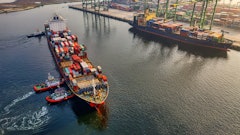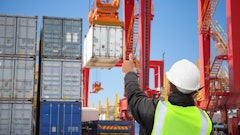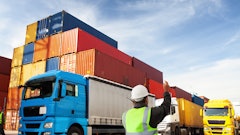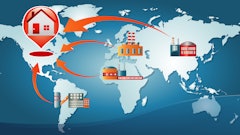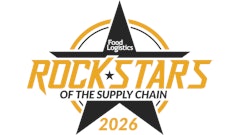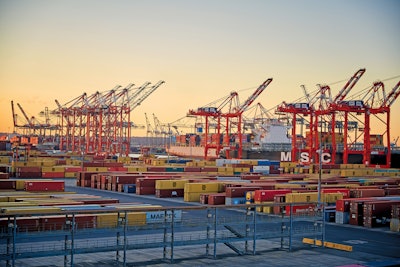
When it comes to U.S. ports and ocean carriers, it’s safe to say that for a sector traditionally stagnant, it’s experienced a great deal of change over the past couple of years.
From dockworker strikes and heightened adoption of nearshoring to an uptick in fuel charges, a deteriorated infrastructure and economic uncertainty with regards to increased tariffs, the ripple effect has been – and will continue to be -- felt across all ports nationwide.
But what does this all mean for 2025? And what will the State of Ports and Ocean Carriers look like in the New Year?
Food Logistics talks exclusively with Jim Bunsey, senior manager of business development, Propane Education & Research Council (PERC), about the benefits of adopting propane-powered equipment.
CLICK HERE to read the full article.
Food Logistics: The global container shipping industry continues to witness an increase in freight demand for U.S.-bound shipments. What does this mean? And what will this look like come 2025?
Jim Bunsey: As the shipping industry continues to see increased freight demand, it’s become even more important for U.S. port operations to be as efficient as possible. We are seeing more ports choosing to adopt propane to power critical equipment like port terminal tractors and forklifts because of propane’s cost effectiveness and reliability. Even as fuel prices fluctuate, propane typically costs about 22 percent less than diesel. These fuel savings become even more important as busy port equipment consumes more fuel to meet increased freight demand. Likewise, propane power can provide more reliability and operational efficiency than electric. While electric equipment requires regular recharging over long periods, a forklift’s propane cylinder can last an entire 8-hour shift and then can be quickly swapped out for minimal downtime. Equipment with onboard propane storage can be refueled in 5 to 10 minutes. We anticipate the growth of propane in the shipping industry will continue as ports diversify their energy mix.
Food Logistics: From your vantage point, what are some of the top disruptions impacting ports and ocean carriers? And, why?
Bunsey: As we’ve seen from this past year, severe weather events –– particularly hurricanes along the Gulf Coast and East Coast –– still pose one of the biggest threats to port operations. Ports using diesel and electric equipment often suffer the worst impacts from hurricanes knocking out electric grids. Propane is stored in cylinders and doesn’t require an electric-powered pump, so port equipment can continue to operate at full efficiency with less downtime. Propane also provides a clean and affordable solution for onsite power generation with portable “micro-grid” back up and prime power generation, providing a reliable source of electricity in any situation. And since propane doesn’t degrade over time like diesel, ports can store it for long periods of time and use it during a storm’s aftermath.
Food Logistics: What does Donald Trump’s re-election mean for the future of ports and ocean carriers., i.e., tariffs?
Bunsey: Changes to trade policy and tariffs certainly have the potential to impact the volume of imports and exports passing through U.S. ports, but propane can help ports navigate these changes by keeping operational costs low. The price of propane is consistently less than both gasoline and diesel, plus, ports can work with their local propane supplier to lock in a set price per gallon and establish a custom refueling schedule. This helps ports maintain a consistent, low-cost supply of energy. Furthermore, because propane is a clean, efficient, and abundant energy option that’s produced here in the U.S., the supply of propane itself likely won’t see much impact from changes to trade policy.
Food Logistics: The International Longshoremen’s Association (ILA) and the United States Maritime Alliance (USMX) reached a tentative agreement on wages, extending the Master Contract until Jan. 15, 2025. What does another possible port strike mean for U.S. supply chains?
Bunsey: Any potential disruption to ports hammers home the need for maximized productivity and efficiency when ports are in operation. Because of propane’s relatively consistent, lower cost per gallon and reduced maintenance costs compared with most diesel and electric equipment, budgets are more predictable, and savings can be reinvested back into the operation and retention strategies. Propane also offers a cleaner working environment by reducing harmful NOx emissions in the air by up to 99 percent compared with diesel.
Food Logistics: Nearshoring is becoming a more common approach to supply chain optimization. What are some of the pros/cons of nearshoring? What does this mean for the state of imports and exports?
Bunsey: Just as nearshoring goods is becoming more common in supply chains, so is nearshoring energy sources. While the price of oil can fluctuate due to shifting supply and demand in global markets, the price of propane doesn’t fluctuate as sharply as other energy sources and consistently remains lower than gasoline and diesel on a per gallon basis. Likewise, propane is American made and abundant, with enough domestic supply to meet demand for energy across various supply chains.
Food Logistics: What technologies or features did your port/ocean carrier or your members implement/deploy to become more sustainable?
Bunsey: In the last several years, the Port Newark Container Terminal (PNCT) adopted 40 new propane-powered port tractors to replace its diesel vehicles. These ultra-low NOx propane engines are 90 percent cleaner than EPA standards, moving the industry closer to achieving near-zero emissions.
Food Logistics: What technologies or features did your port/ocean carrier or your members implement/deploy to become safer for workers?
Bunsey: When the Port Newark Container Terminal adopted 40 new propane-powered port tractors to replace its diesel vehicles, it not only made major progress on emissions standards, but it improved the day-to-day air quality for port workers and members of the Newark community. In testing at PNCT, the propane tractors reduced NOx emissions by 99 percent, Total Hydrocarbons (THC) idle emissions by 77.5 percent, carbon dioxide emissions by 14 percent, and Total Particulate Matter (TPM) 75 percent.
Food Logistics: Please share any stats/market trends detailing the status of the ports and ocean carrier market as it stands end of 2024 heading into 2025.
Bunsey: Ports adopting propane-powered equipment are already reducing emissions, and those environmental benefits will continue to improve with an increase of available renewable propane as well. Made from a variety of renewable feedstocks, fats, and oils –– including plant oil, vegetable oil, or used cooking oil –– renewable propane is net carbon neutral and does not contribute to elevated atmospheric carbon levels. Renewable propane’s chemical structure and physical properties are the same as traditional propane, meaning it can be used for all the same applications without any modifications to engines or equipment. For operations not only looking to lower emissions, but to reach net zero emissions, renewable propane is an exciting development.
Food Logistics: What are some things not addressed above that may be pertinent to our cold food chain readers?
Bunsey: Propane can power it all, from light- and medium-duty vehicles, to terminal tractors and forklifts, to commercial generators and marine vessels. Many ports turn to electric equipment to meet environmental regulations, but propane reduces harmful emissions — including SOx — at a better price point. Everywhere you look, the equipment powering the hardest-working ports could be running cleaner and more cost-efficiently on propane.




